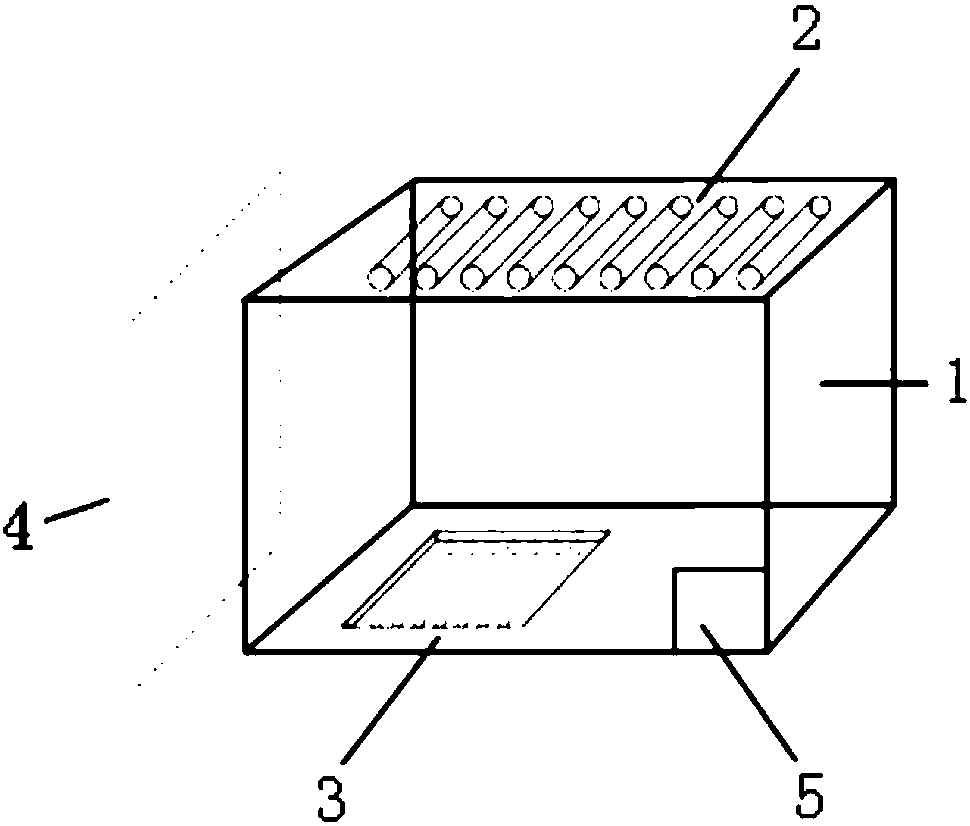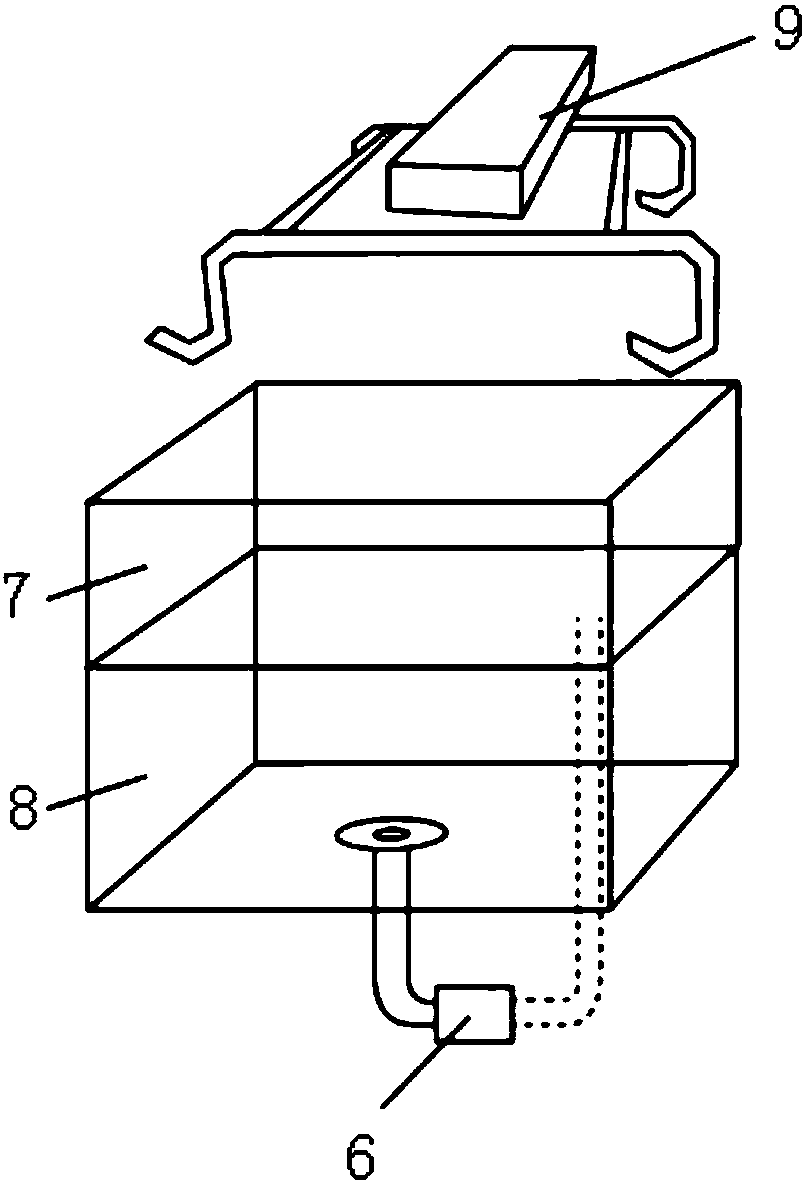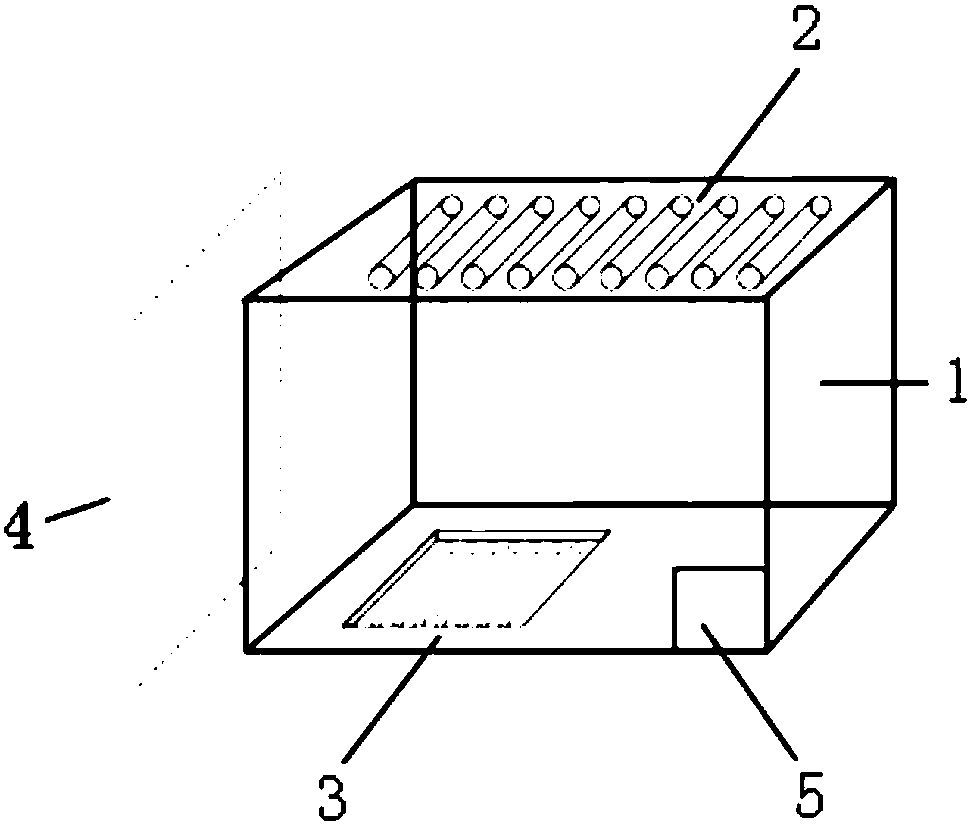Resin lens with ultraviolet photocuring refractive index of 1.56 and production method thereof
A technology of resin lenses and ultraviolet rays, applied in optics, optical components, optical components, etc., can solve problems such as long polymerization time, large internal stress, and general optical performance
- Summary
- Abstract
- Description
- Claims
- Application Information
AI Technical Summary
Problems solved by technology
Method used
Image
Examples
Embodiment 1
[0036] Methyl styrene: 180g;
[0037] Polypropylene glycol diacrylate: 220g;
[0038] Trimethylolpropane trimethacrylate: 300g;
[0039] Polypentyl glycol dimethacrylate: 300g;
[0040] 2'-(2'-hydroxy-3'-tert-butyl-5'-methylphenyl)-5-chlorobenzotriazole: 0.01g;
[0041] 2-(2'-hydroxy-5'-tert-octylphenyl)benzotriazole: 0.02g;
[0042] 2-hydroxy-4-methoxybenzophenone: 0.02g;
[0043] 2,2'-Dimethyl-4-methylaminobenzophenone 2'-(2'-hydroxy-3'-tert-butyl-5'-methylphenyl)-5-chlorobenzene
[0044] Triazole: 0.03g;
[0045] Pigment: Pigment blue: 0.5g; Pigment green: 0.2g.
[0046] Photocuring initiator: 1.2 g of acylphosphine oxide.
[0047] The mixture obtained according to the above formula was sheared for 2 hours at a stirring speed of 2000 rpm, and then vacuumed at a degree of vacuum of 1.0*10 -2 Vacuum degassing under Pascal vacuum. Then filter with a filter element of 1 μm, pour into the glass mold prepared in advance after filtering, and put the glass mold into an ult...
Embodiment 2
[0051] Methyl styrene: 180g;
[0052] Polypropylene glycol diacrylate: 220g;
[0053] Trimethylolpropane trimethacrylate: 300g;
[0054] Polypentyl glycol dimethacrylate: 300g;
[0055] 2'-(2'-hydroxy-3'-tert-butyl-5'-methylphenyl)-5-chlorobenzotriazole: 0.03g;
[0056] 2-(2'-hydroxy-5'-tert-octylphenyl)benzotriazole: 0.03g;
[0057] 2-hydroxy-4-methoxybenzophenone: 0.05g;
[0058] 2,2'-Dimethyl-4-methylaminobenzophenone 2'-(2'-hydroxy-3'-tert-butyl-5'-methylphenyl)-5-chlorobenzene
[0059] Triazole: 0.06g;
[0060] Pigment: Pigment blue: 0.5g; Pigment green: 0.2g.
[0061] Photocuring initiator: 1.5 g of acylphosphine oxide.
[0062] The mixture obtained according to the above formula was sheared for 2 hours at a stirring speed of 2500 rpm, and then vacuumed at a degree of vacuum of 1.0*10 -2 Vacuum degassing under Pascal vacuum. Then filter with a filter element of 0.5 μm, pour it into a prepared glass mold after filtering, put the glass mold into an ultraviolet curin...
PUM
| Property | Measurement | Unit |
|---|---|---|
| refractive index | aaaaa | aaaaa |
| refractive index | aaaaa | aaaaa |
| refractive index | aaaaa | aaaaa |
Abstract
Description
Claims
Application Information
 Login to View More
Login to View More - R&D
- Intellectual Property
- Life Sciences
- Materials
- Tech Scout
- Unparalleled Data Quality
- Higher Quality Content
- 60% Fewer Hallucinations
Browse by: Latest US Patents, China's latest patents, Technical Efficacy Thesaurus, Application Domain, Technology Topic, Popular Technical Reports.
© 2025 PatSnap. All rights reserved.Legal|Privacy policy|Modern Slavery Act Transparency Statement|Sitemap|About US| Contact US: help@patsnap.com



